To run the forums, host the website, and travel, I charge a universal service fee for my reviews. This review was sponsored by BULLS. My goal is to be transparent and unbiased, this video and written review are not meant to be an endorsement of BULLS products.
Today we are checking out the BULLS E-Core EVO EN Di2 27.5+. This bike has been updated recently and I was excited to get a chance to review it. First off, lets break down the name. There are a couple of E-Core bikes out there right now and this one has the marker ‘EN’ which delineates it as an enduro style mountain bike. The Di2 marker means it is using Shimano’s electric gear-shifting system, while the 27.5+ indicates the tire size with the + showing it is using a wider plus tire. For the sake of keeping the reading review compact, I will refer to this bike as the EN from here on out. On the outside, the EN is an enduro bike with full suspension, Shimano E8000 drive train, and loaded with a bunch of features. Once you get a closer look, you realize the new stand out here is the dual battery system that BULLS has named “Twin Core” and provides long range, great for all day riding or climbing steep terrain. It is a really unique dual battery system with 2 batteries that click into the sides of the downtube and we will break that down a little more in the battery paragraph in a bit. For now I want to focus on the frame and some of the details. There are 3 frame sizes here (44cm, 49cm, 54cm) and with that twin core battery setup makes for a little bit of a heavier bike at 56.4lbs, although you could remove one of the batteries to save 4.7lbs of weight. As a purpose built full suspension enduro model, it is a little bit pricier at $8,499, but that price does include both batteries. Looking closely though, the bike almost rides the line between downhill and enduro since it has 180mm of travel. The front suspension is a Rock Shox Lyrik RC Boost Debonair with 34mm stanchions, kind of a higher air capacity air suspension. It has a bigger volume with that 180mm of travel and features a compression clicker, rapid recovery rebound, and black anodized tubes. In the rear, the suspension is a Fox Float X2 Air, also a high capacity suspension with 180mm of travel, an external chamber, and some Kashima coating. This one has 2 position compression, rebound adjustment, and can sag the air for body weight as well. This full suspension setup is very high quality and really just plenty of adjustment here, of course, there is also a tapered head tube as well if you wanted a different setup. For the wheels, we have these 35mm DT Swiss HX 1501 rims with 28 spokes on both wheels. 28 spokes may be fewer but they are a tapered 14-15 gage configuration so as to remain extra strong. DT Swiss is a great brand so I think they may be going for lightweight setup here. The tires are Schwalbe Magic Mary SnakeSkin TLE’s, use the ADDIX soft rubber, and are 27.5” x 2.6”… so more of a nimble and agile plus size tire. They are rated for 17-38psi overall and are also tubeless ready. Both axles are 15mm through axles with the front being a quick release with 110mm boost hub spacing, definitely wider and gives you a stronger sturdier bracing angle. The rear is a 6mm hex bolt pattern (not quick release) 48mm hub spacing, so boost again here, giving you that same sturdy configuration. The seat post features a Kind Shock LEV 125mm dropper post and is great for quick adjustment. Overall these are slightly wide bikes, but I think they can handle the downhill nicely since the weight is positioned well, but again, being at that 180mm of travel, it is still good for climbing back up too. I did want to mention these optional Monkey Link lights. They have a really unique magnetic quick release system, are positioned well, and compact. The front removes easy, points where you steer, and is adjustable while the rear is great too, but only has 1 LED. At $170, they are kind of an expensive addition, but honestly super convent and with all that extra battery power, it’s cool they can tap into that. Other features include a Velo plastic slap guard, locking Ergon grips, aluminum alloy skid plate, and kickstand provisions (although I am not how many will use that feature on an enduro).
Driving this ebike is the new E8000 motor system from Shimano. Their previous (and still used) motor focused on neighborhood and urban applications with up to 50 Newton meters of torque output and lower 100 RPM max assist speeds. With the E8000, Shimano is targeting trail and mountain applications with up to 70 Nm of torque and full 120 RPM support to match Bosch. For riders who like to spin, this is a great thing. It means you can achieve higher top assisted speeds WITHOUT having to shift gears. That’s a big deal when navigating varied terrain with ups and downs. It’s nice to have room to ride the bike vs. dealing with settings. Ebikes tend to be heavier, and the motor helps to make up for that, but keeping momentum and flow means you have to control the bike with your body and the three aspects of that are steering, pedaling, and positioning body weight. And so, for me it’s critical to have power when I want it and a range of pedaling options… all without switching gears or assist settings, and I feel that you get this experience with the E8000. It is not as smooth to start, there’s almost a click where the motor kicks in. And again, when you reach the maximum assisted speed of ~20 mph, the motor cuts out a little quick. This isn’t a bad thing, it’s just different than Brose, which I consider to be the smoothest, and Bosch, which offers eMTB mode now for a wider range of power in a single assist setting. Just like those two, I believe that the the Shimano motor controller is listening for rear wheel speed, pedal cadence, and pedal torque. My favorite parts about this motor are how it looks, how little it weighs (6.35 lbs vs. 8.8 lbs on the Bosch CX), and the standard Q Factor (crank spacing). It was designed from the ground up to work with a standard sized chainring and not have a reduction gearing system that could create drag above assisted speeds and to position the spindle further back to keep the chain stay distance short and provide a snappy ride experience. I should also mention here that both the motor and display are IP54 rated which is kind of neat. Mechanically, the bike uses a Shimano Deore Shadow Plus 11 speed derailleur combined with the Di2 electronic shifting. The cassette is an 11-46 tooth setup, so really a nice wide range here. For stopping power it features a set of Shimano Saints 203mm hydraulic brakes in both the front and rear. I love that it has these little fins that act as heat sync, quad piston calipers, and bigger rotors that cool faster and give great mechanical advantage.
Powering the bike is BULLS Twin Core battery setup that gives you 2 batteries that click into the sides of the downtube. It’s a great feature that allows for all day long range and helps for climbing steep terrain. This setup uses two 36v 10.4ah batteries, so you get 20.8ah total with roughly 750 watt hours of capacity. That’s better than the Bosch PowerTube with is only around 500 watt hours! The batteries weigh 4.7lbs each and you can remove one if you want to keep the weight lower. BULLS also has a optional tool box cover for $50 which covers up 2nd battery bay if you want to shave some of that weight and store a few things inside. Both with the tool box attachment, or just riding with one battery and a blank spot, I worry about weight balance. Since the batteries mount along the right and left sides of the downtube, you could effect the weight distribution by not having an equal 4.7lbs on both sides. Anyway, there is an LED charge level on the battery as well as a little flip up handle and magnetic port cover. I should mention the magnetic port cover has no leash attached to it, so once you flip it out, it is very easy to lose, so do be careful. The port is positioned next to the crank arm, so that also can be problematic if you are charging on the bike and somehow the pedals get nudged. The batteries can be charged off the bike, but must be done so separately, however, when charged on the bike, they will charge semitaniously, prioritizing the lower battery first so it can then charge in tandem. Charging is done with this magnetic interface charge that goes at a very quick 4.5amp speed and weighs 1.9lbs. I love the metal plate on the edge of the battery that give it some durability if you are doing some hardcore riding. I also like that the Abus keys come with a code so you can get matching keys for any locks you might buy. However, there is no USB port anywhere here to tap into the power of the bike. To really care for this and other lithium-ion packs, I have heard that storing in a cool dry location vs. extreme heat or cold will extend the life and try to keep it about 50% full when not using for long periods so you won’t stress the cells. Try not to let it run down to zero, because that’s really hard on the cell chemistry.
The cockpit is very orderly and neat thanks to the small Shimano display. It seems to trade convenience for durability and stealthiness. It also works in tandem with Shimano’s E-TUBE app allowing for more functions. In short, the power button is way down on the battery and the display screen changer button is this little round button positioned below the display, not within reach of either grip. You cannot cycle through readouts without taking one of your hands completely off the bar and then carefully pressing up on a tiny rubber circle that’s about the size of a round eraser built into the end of a pencil! Even when stopped, if you’re wearing gloves, this button seems a little small. Perhaps it’s not an issue for most riders because all you really need to do is turn the bike on and then click the left trigger shifters to navigate from Off to Eco, Trail, or Boost… and then pedal. But if you never press this little rubber button, you won’t see your distance, odometer, range estimate, trip time, average speed. You’ll just see your current speed or pedal cadence (those are the only two readouts that stay put when you cycle to them). To me, this is a purist decision, one that favors symmetry and tradition over usability. But, it’s not bad. I’m the kind of rider that prefers the extra large Bosch Intuvia or Brose center displays because I cannot read fine print and those products have easy to reach rubberized buttons that do many things. Perhaps my favorite part of the compact Shimano display is that it provides readouts for both motor assist, lights (if you had them integrated), and gearing because of the electronic shifting used on this EN model. I love how snappy the gears changed, that they would stay true longer because there’s less cabling to get stretched, and that I could still do multi-step shifts. It really is neat to have trigger shifters that click (on both bars) that really aren’t pulling any cables, just sending electronic signals. The drivetrain here is tight, and even provides a one-way clutch system to reduce or increase tension on the chain, which can reduce bounce and drops. This is a different sort of electric bike, one that seems to be chasing the pure cycling experience and layout while stuffing in the latest and greatest technology throughout.
The BULLS E-Core EVO EN Di2 27.5+ is quite a beast and I had a great time taking it out aggressively on the trails. It handled every thing very well and I was very impressed. However, there are some tradeoffs to consider. The button on the display is difficult to reach and really annoying if you are trying to view different stats on the fly. Interestingly enough, there is also no shift detection, which is a bit of a missed opportunity since it employs an electronic shifting system. I should also mention that removing a battery saves weight, and adding a tool box there adds convince, but either of these options may affect the weight distribution on the bike a bit. All in all though, BULLS is a great company that offers a dealer network, comprehensive warranty, and wonderful support. They use a lot of high quality components and it really shows in this bike. I really did have a ton of fun and I am excited I got the chance to check this one out, so a big thank you to BULLS.
As always, I welcome questions and feedback in the comment section below. Whether you own a previous version of the bike, have taken a test ride, or are brand new to the space, my goal is to provide an objective and honest resource. You can also join the BULLS Ebike forums and share your own photos, videos, and review updates to help others! Have fun out there, and ride safe :)
Pros:
- At 180mm of travel it is a great option for both downhill and getting back up the hill, kind of a happy medium and really a great ride
- The full air suspension here is highly adjustable, using a Rock Shox Lyrik in the front and a Fox Float X2 in the rear
- EThe bike uses a Twin Core battery setup that gives you 2 batteries that click into the sides of the downtube, it’s a great feature that allows for all day long range and helps for climbing steep terrain
- The batteries are two 36v 10.4ah packs, so you get 20.8ah total with roughly 750 watt hours of capacity, that’s better than the Bosch PowerTube with is only around 500 watt hours
- For wheels, you get these 35mm DT Swiss HX 1501 rims with 28 spokes on both wheels, 28 spokes may be fewer but they are a tapered 14-15 gage configuration so as to remain extra strong
- The tires are Schwalbe Magic Mary SnakeSkin TLE’s, use the ADDIX soft rubber, and are 27.5” x 2.6”, so more of a nimble and agile plus size tire, they are rated for 17-38psi overall and are also tubeless ready
- Excellent weight distribution with both batteries on, the motor is low and center on the frame, Shimano makes one of the lightest motors out there so really a great choice for an enduro bike
- The Shimano E8000 motor is mountain-specific, delivering higher peak torque up to 70 Newton meters vs. the standard Shimano E6000 which offers 50 Nm, it’s a bit louder and will drain the battery faster but performs very well on steep, rugged terrain
- The motor itself is very compact, positions the crank arms further back to reduce chainstay length (for a snappier ride), and is angled up to maximize trail clearance, I believe that it uses a traditional Q-Factor as well so the crank arms aren’t pushed out as wide as some other ebikes
- Because Shimano has designed their electric bike motors to work with standard sized chainrings, you can change the sizing easily aftermarket, there’s also no mechanical drag because of a reduction gear when pedaling unassisted or beyond the maximum assisted speed of 20 mph
- The chainring uses a narrow-wide tooth pattern that grabs the chain more securely (preventing drops and slips), and there’s even a plastic full-surround guide which can clear debris and ensure it doesn’t bounce off track in even the roughest sections
- Extra wide gear range in the 11-speed cassette, you get 11 to 46 tooth sprockets and an upper mid-level derailleur with Shadow Plus one-way clutch (push the grey lever into the up position to tighten the chain and further reduce bounce), shifting is done electronically on this bike which means it is faster, more exact, and won’t suffer as much from cable stretch over time
- Wider Boost hub spacing with sturdy thru-axles provides spoke strength and power transfer for steering and pedaling + motor support in the rear, it’s tougher and sturdier
- Super clean cockpit with ebike controls that imitate shifters, the display is smaller than a lot of competing products and allows you to manage gears as well as motor assist levels
- The EN comes in three frame sizes and has a seat post dropper, so different sized riders can enjoy riding the bike and mount more easily while also transitioning smoothly between different stances and terrain
- It seemed like the power button to switch the ebike systems on is actually on the battery pack (on the left side of the base of the downtube) which requires a bit more reaching and is different than most other systems with handlebar on/off switches… except for the Specialized Turbo Levo models which also have a control pad on the downtube, I guess it’s stealthier this way, more hidden on the frame?
- Shimano does offer a smartphone application called the Powertube App which allows you to adjust more settings, I believe their system can also connect with heart rate monitors using ANT+ wireless, it’s neat that you can just hold the circle button on the base of the display and get access to so many menus (including the ability to turn off beeping noise)
- Compared to the city-oriented Shimano E6000, the mountain-oriented E8000 has a higher RPM support, so you can spin up closer to 120 and not have to shift as much to hit higher speeds
Cons:
- A pricier ebike at $8,499 so it may not be for everyone, when you do consider both batteries come with the bike, as well as the nicer brand name components, it does make sense a bit though
- The Shimano display is compact and purist, but you cannot adjust it or remove it easily, also the main button is difficult to reach, especially so during aggressive riding, with no controls on the side, you have to remove a hand from the handle bar to view other stats, also the display is so compact, the smaller readout can be difficult for some
- There is no USB integration on the display or batteries, kind of a shame since it would be nice to tap into that dual battery setup
- Although removing a battery saves weight, and adding a tool box there adds convince, neither of these options will affect the weight distribution on the bike a little bit, so I do worry about how the balanced could affect a very serious rider, other companies have made more even dual battery setups to mitigate this
- Considering that Shimano made the electronic shifting drivetrain and motor plus motor controller, I was surprised that there wasn’t any sort of shift detection or communication between the systems to reduce strain on the chain, sprockets, and rear derailleur
- The charging port on the battery is positioned next to the crank arm, so that also can be problematic if you are charging on the bike and somehow the pedals get nudged
- The magnetic port cover on the battery has no leash attached to it, so once you flip it out, it is very easy to lose, so do be careful
- I love the optional Monkey Link lights, but at an extra $170, I do wish they came with the bike since it is already at a bit of a premium price
- Small gripe here, but there are no bottle cage bosses anywhere on the bike, although I do understand many would like to keep the weight down, however, some may want the hydration option for such a long day on the trails with 2 batteries
Resources:
- Official Site: https://www.bullsebikes.com/

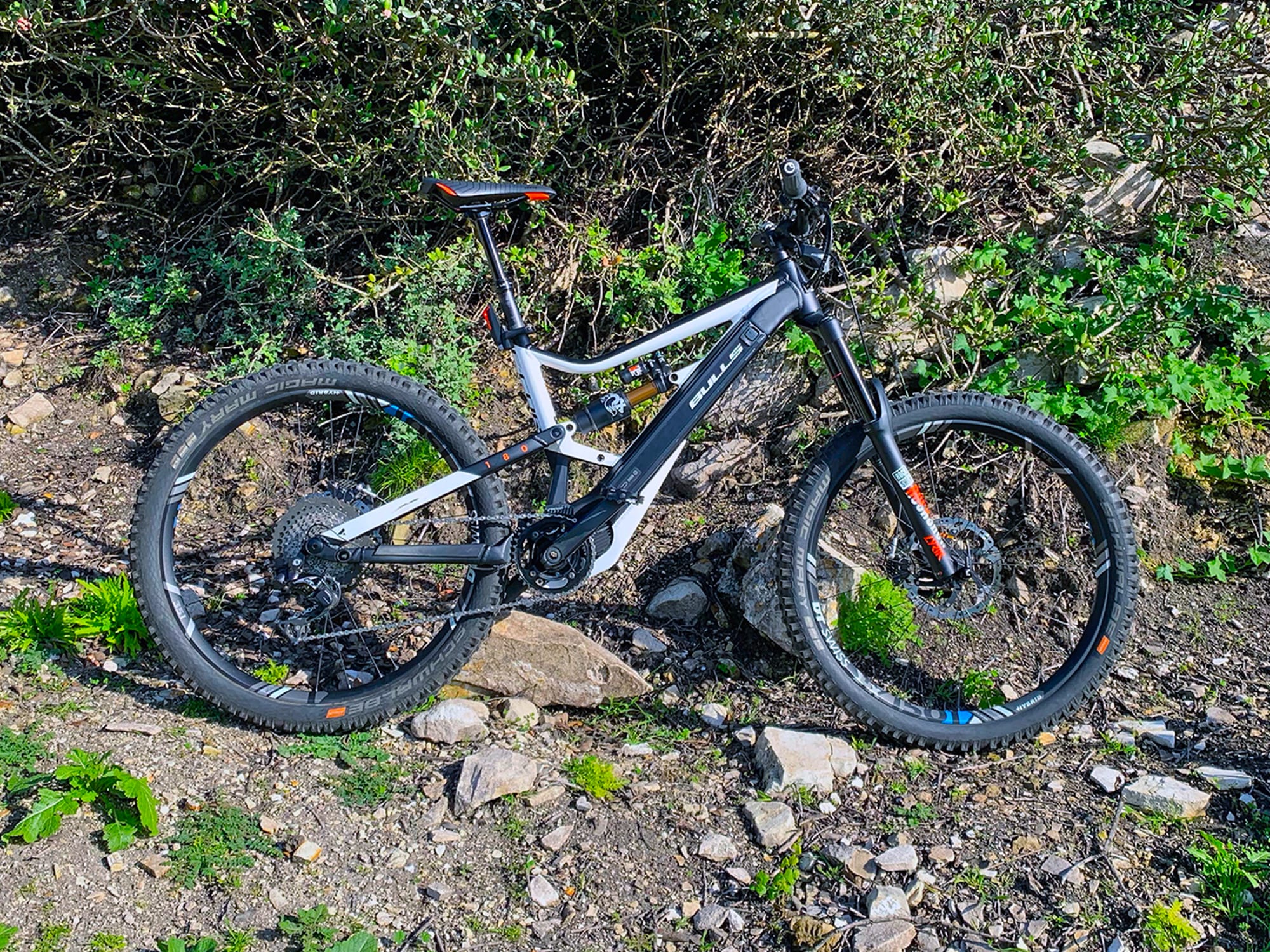


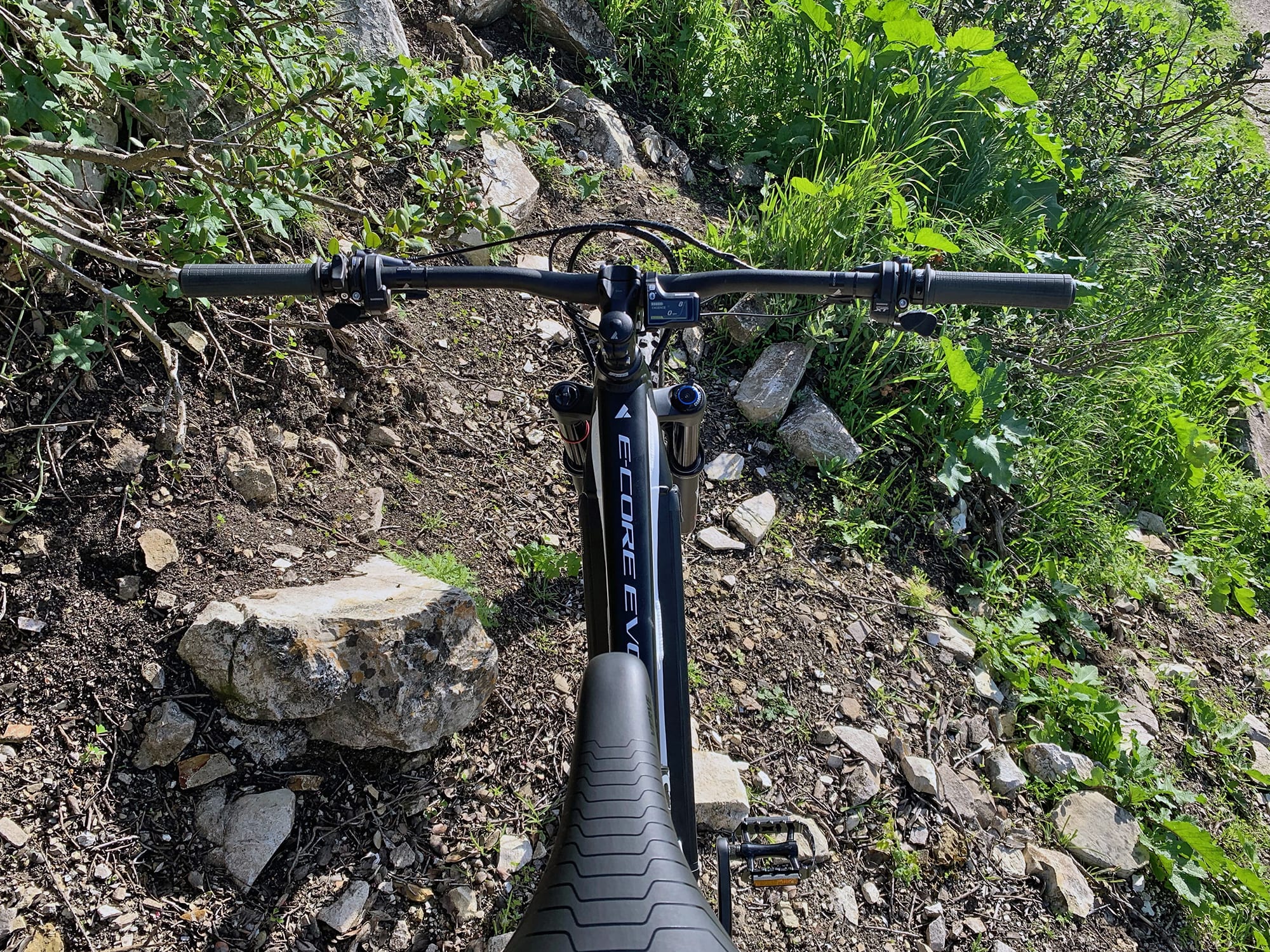
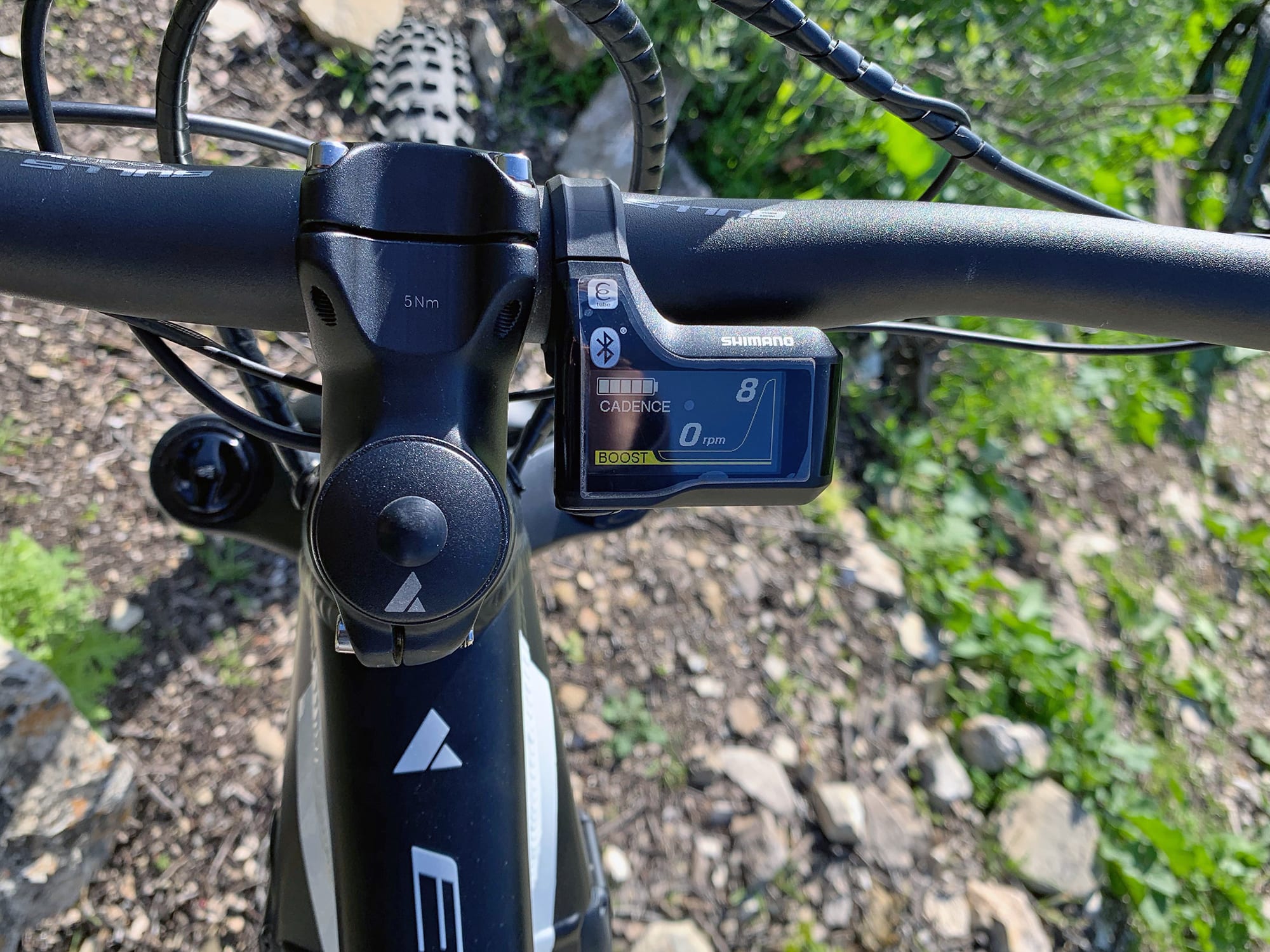
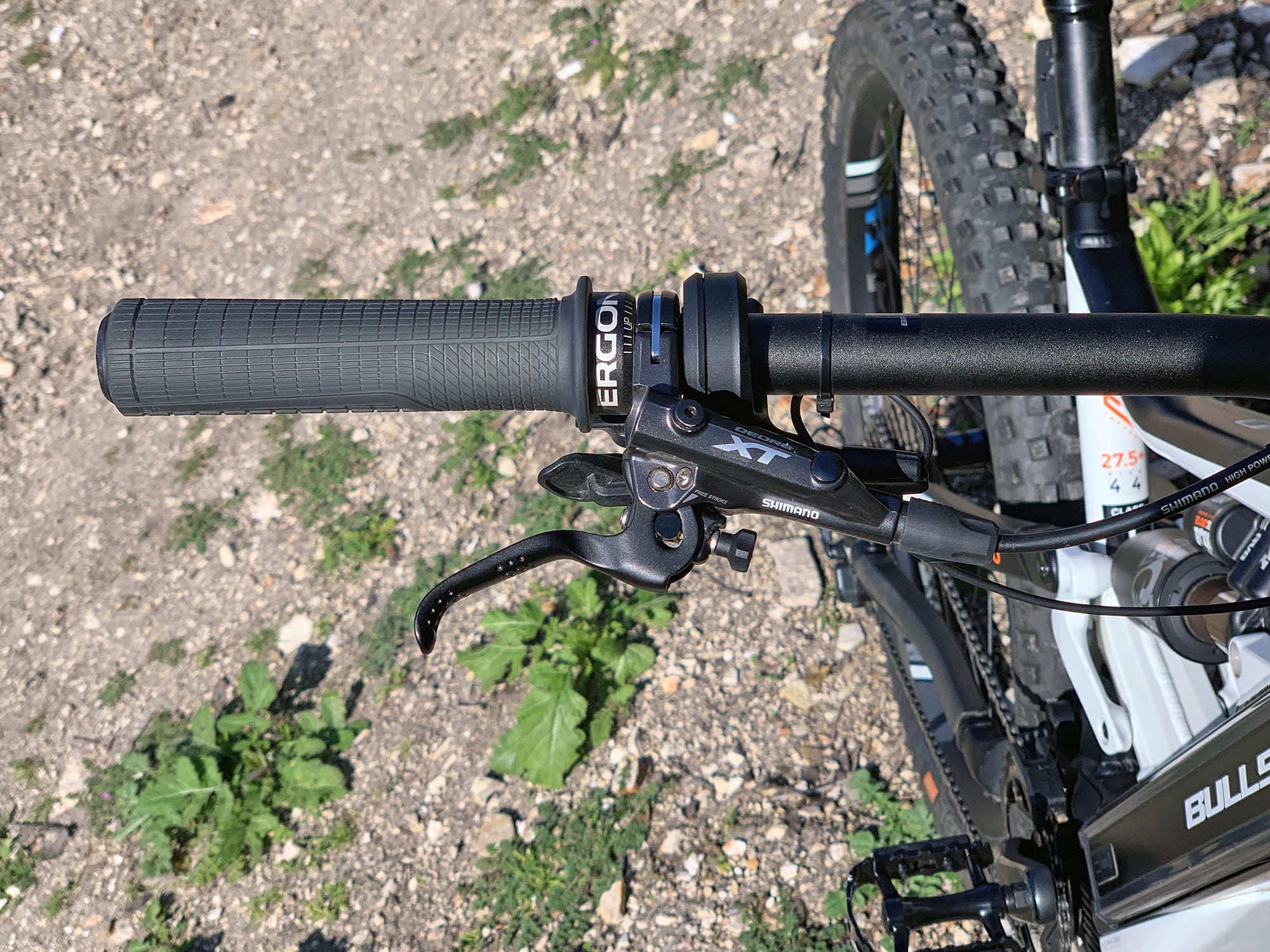
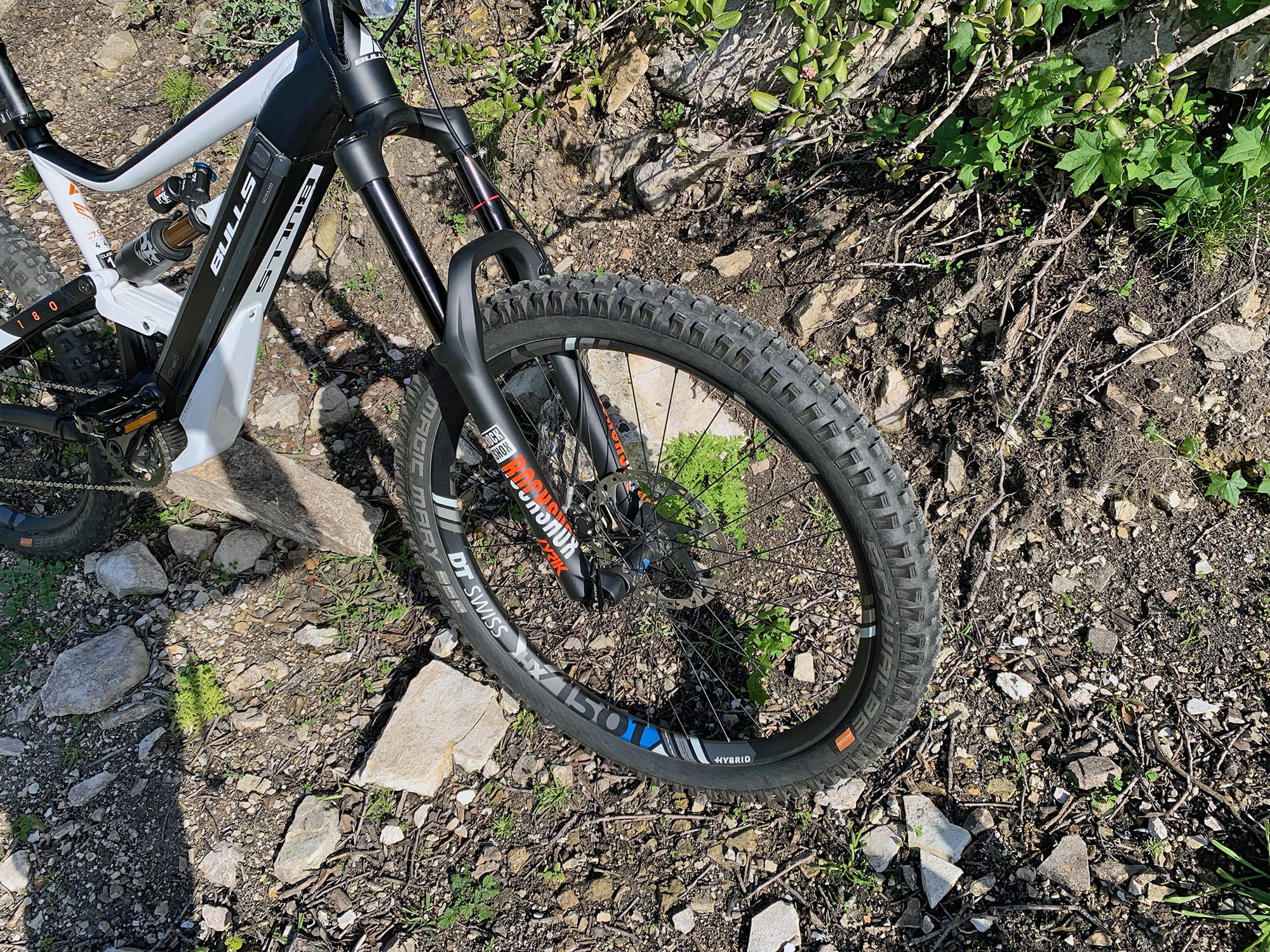

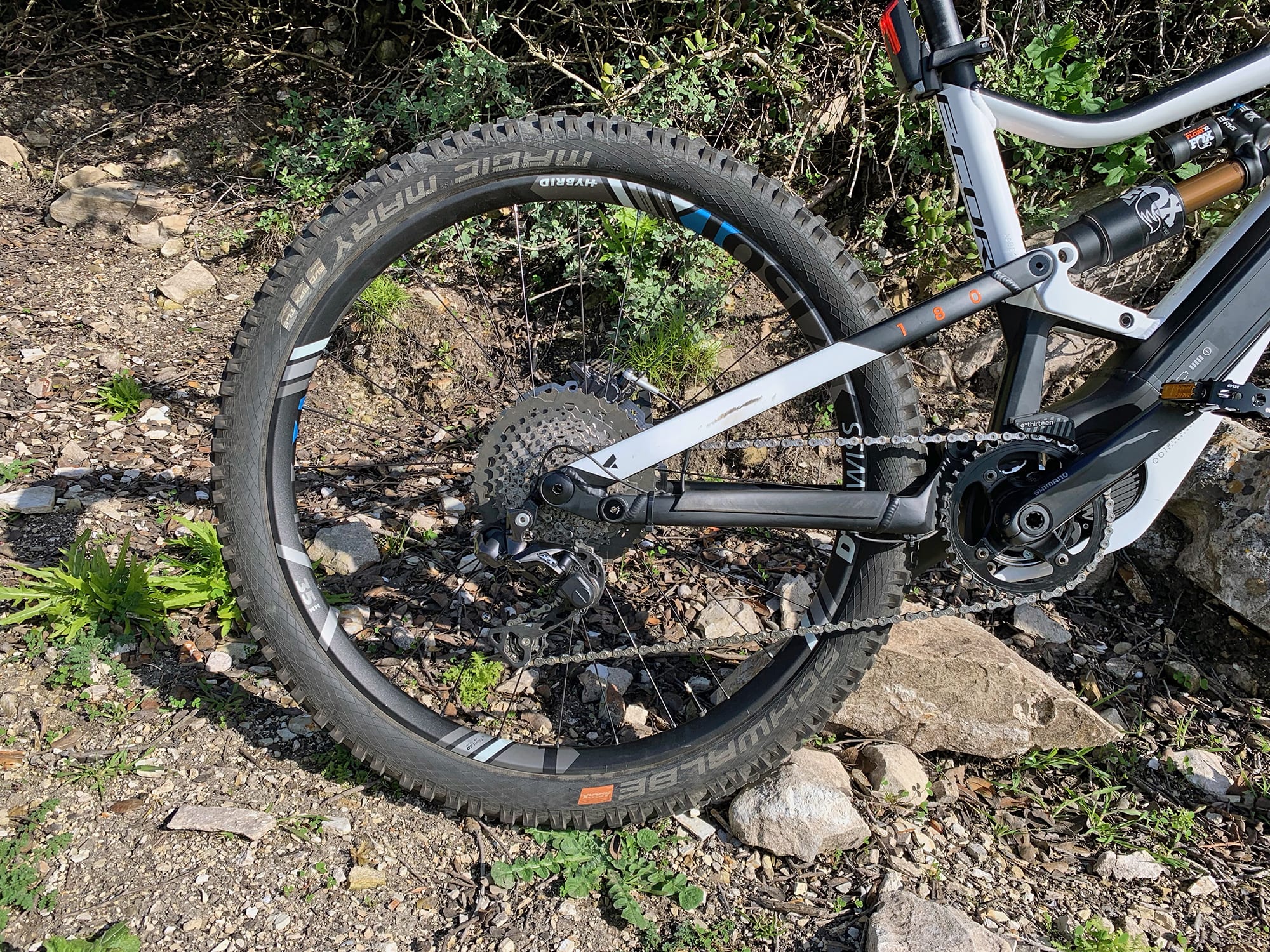
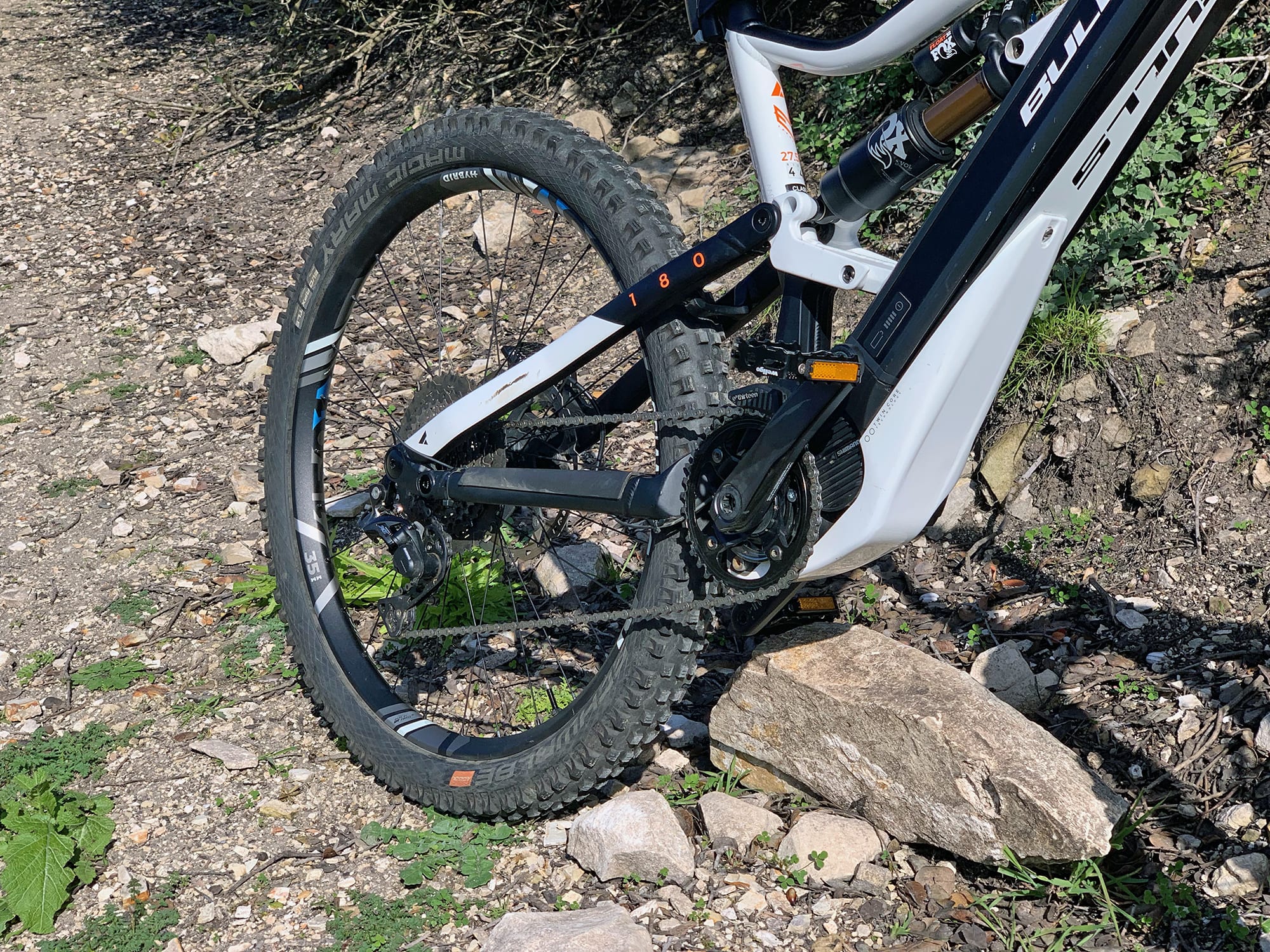


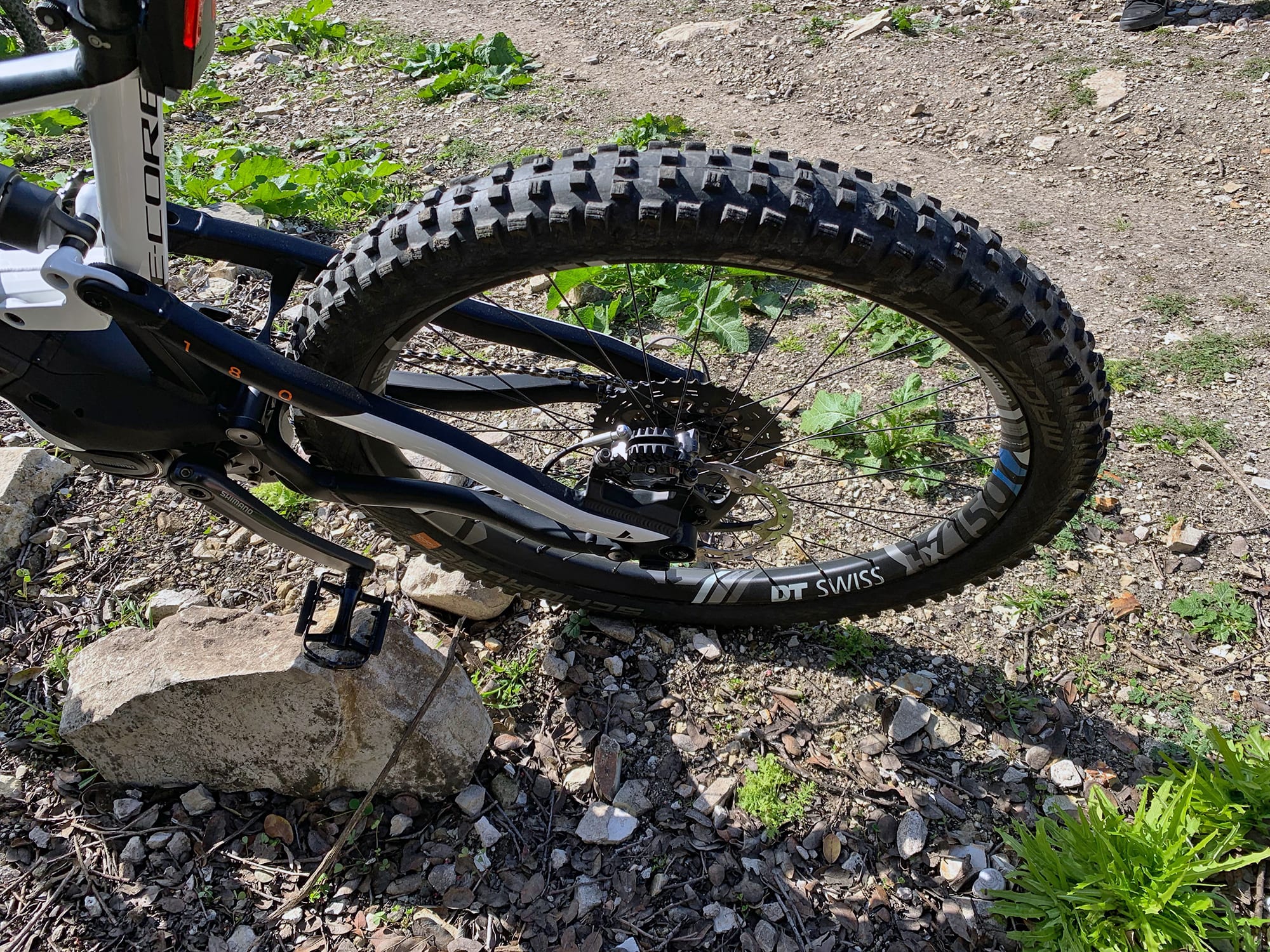

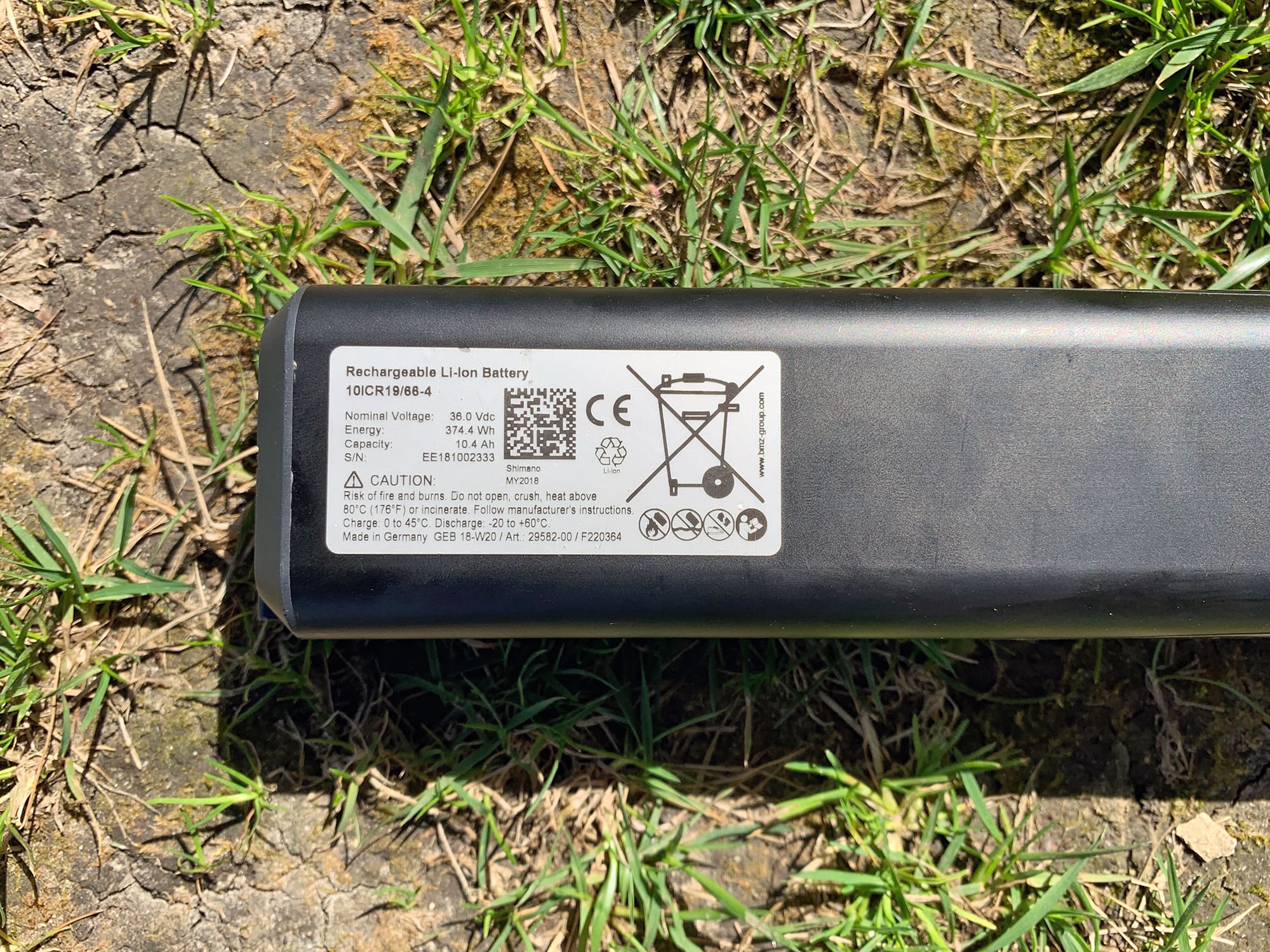

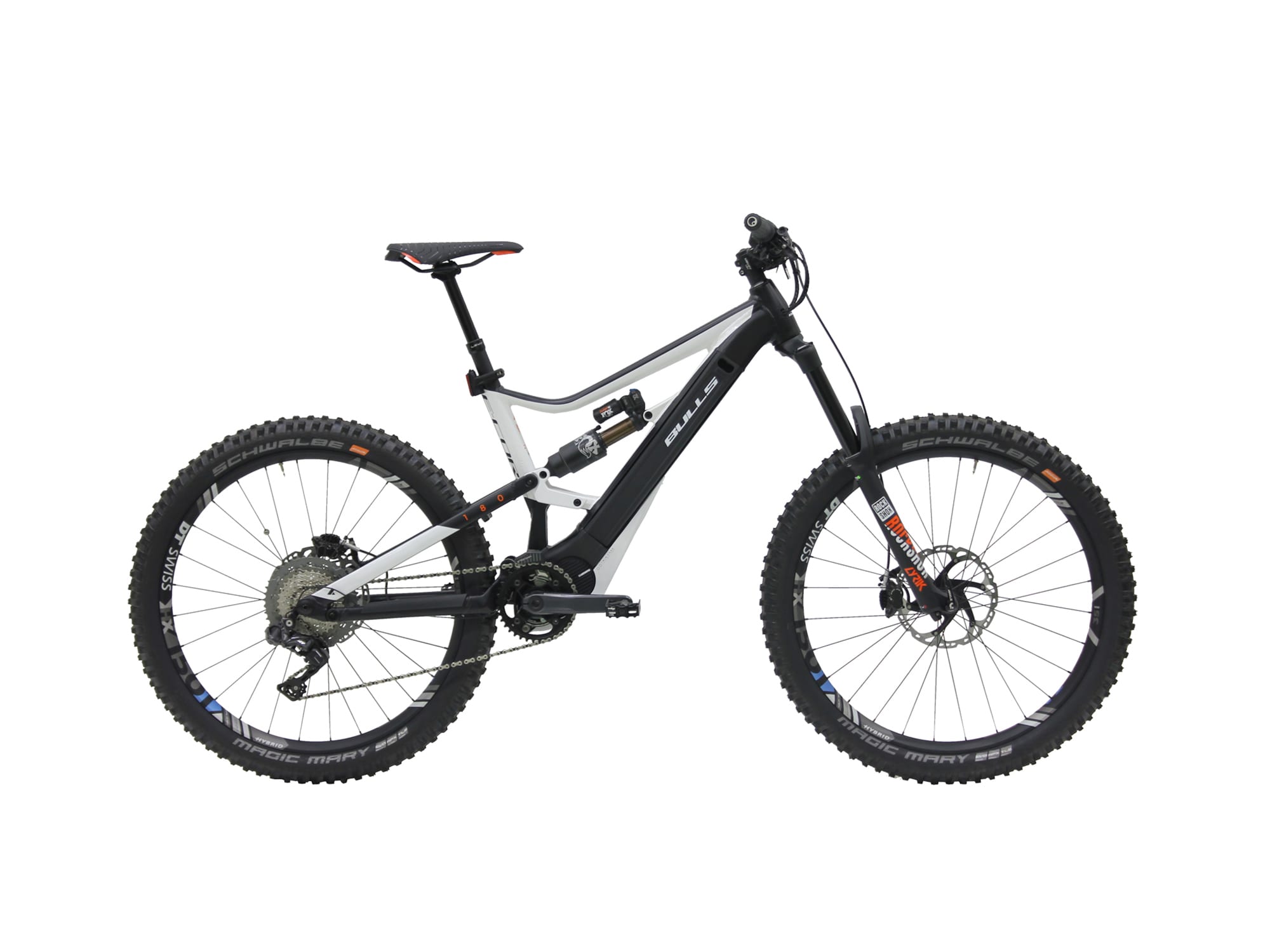

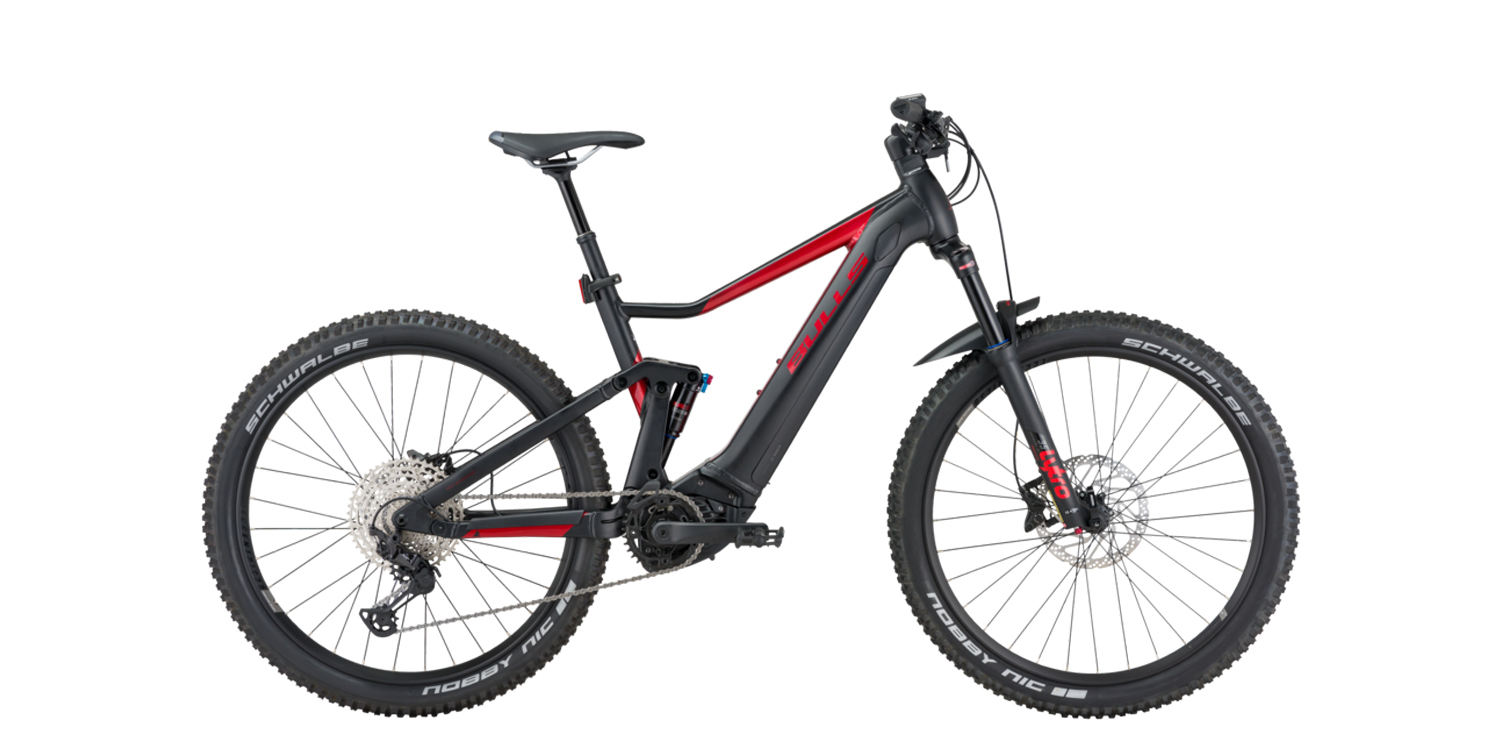
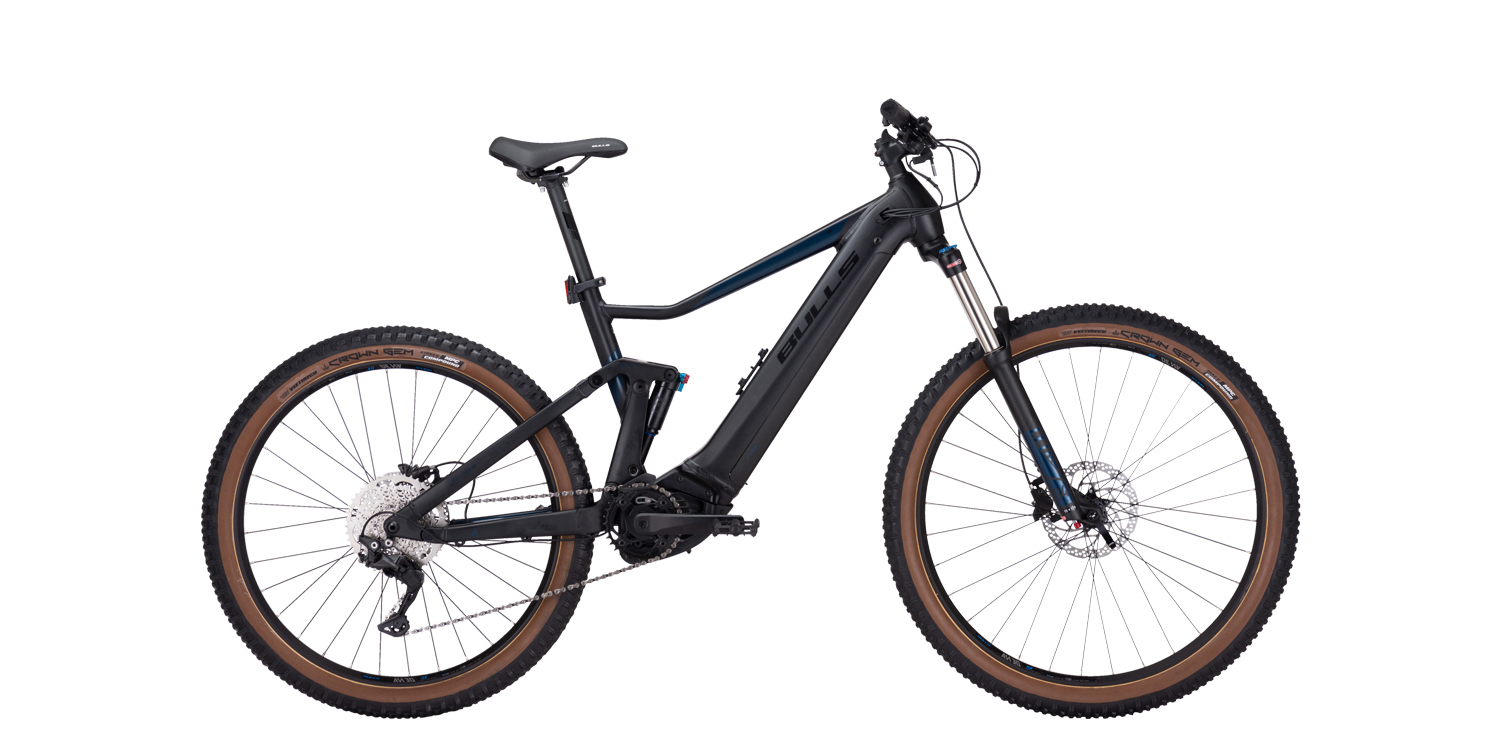
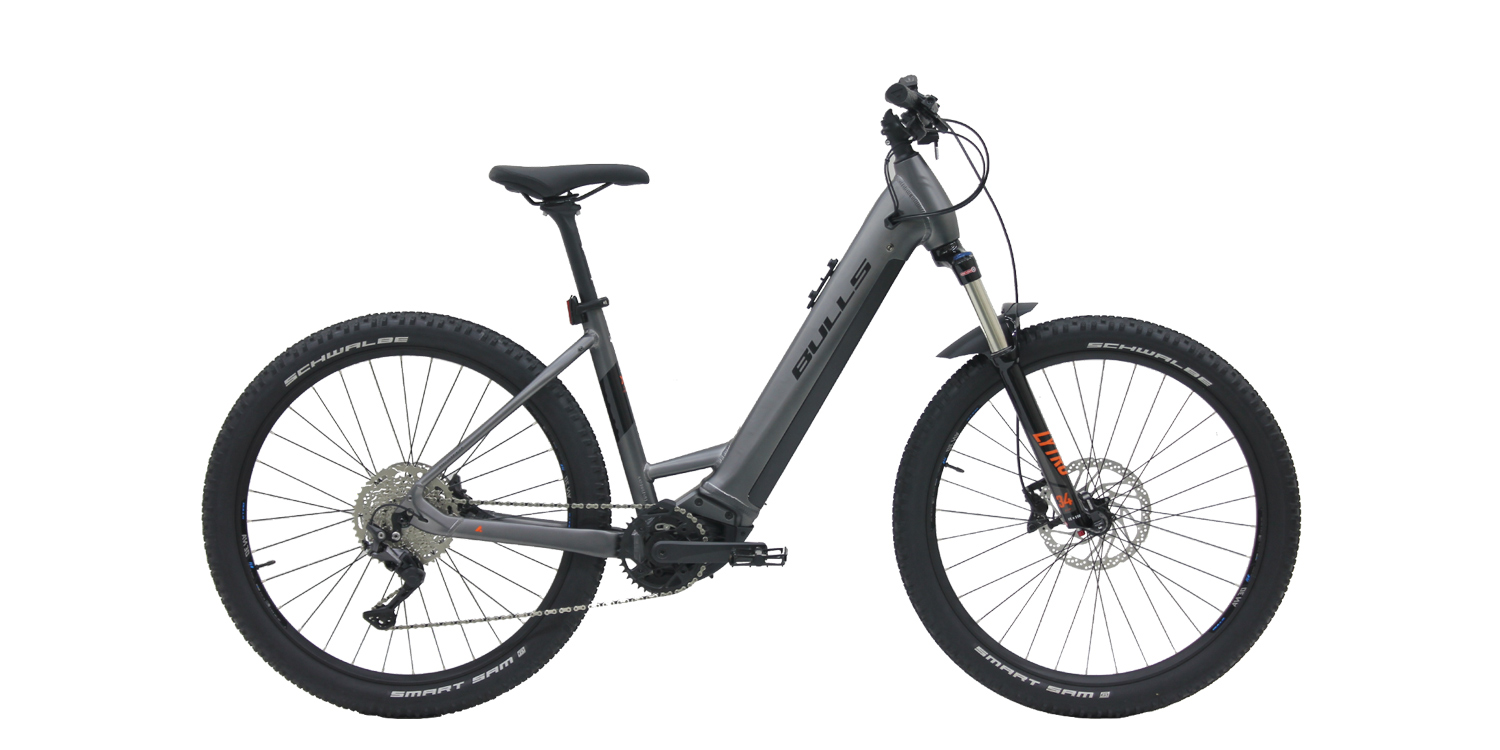
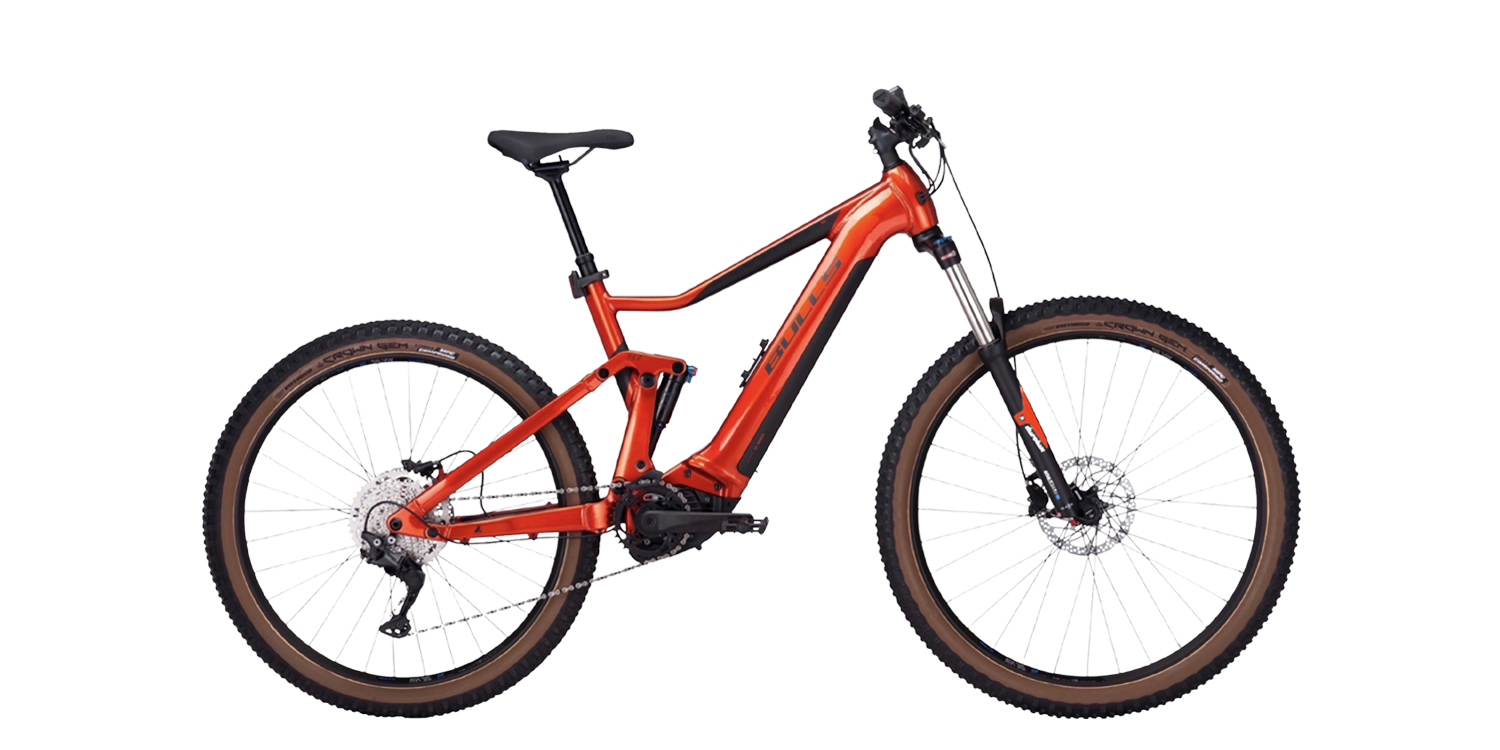

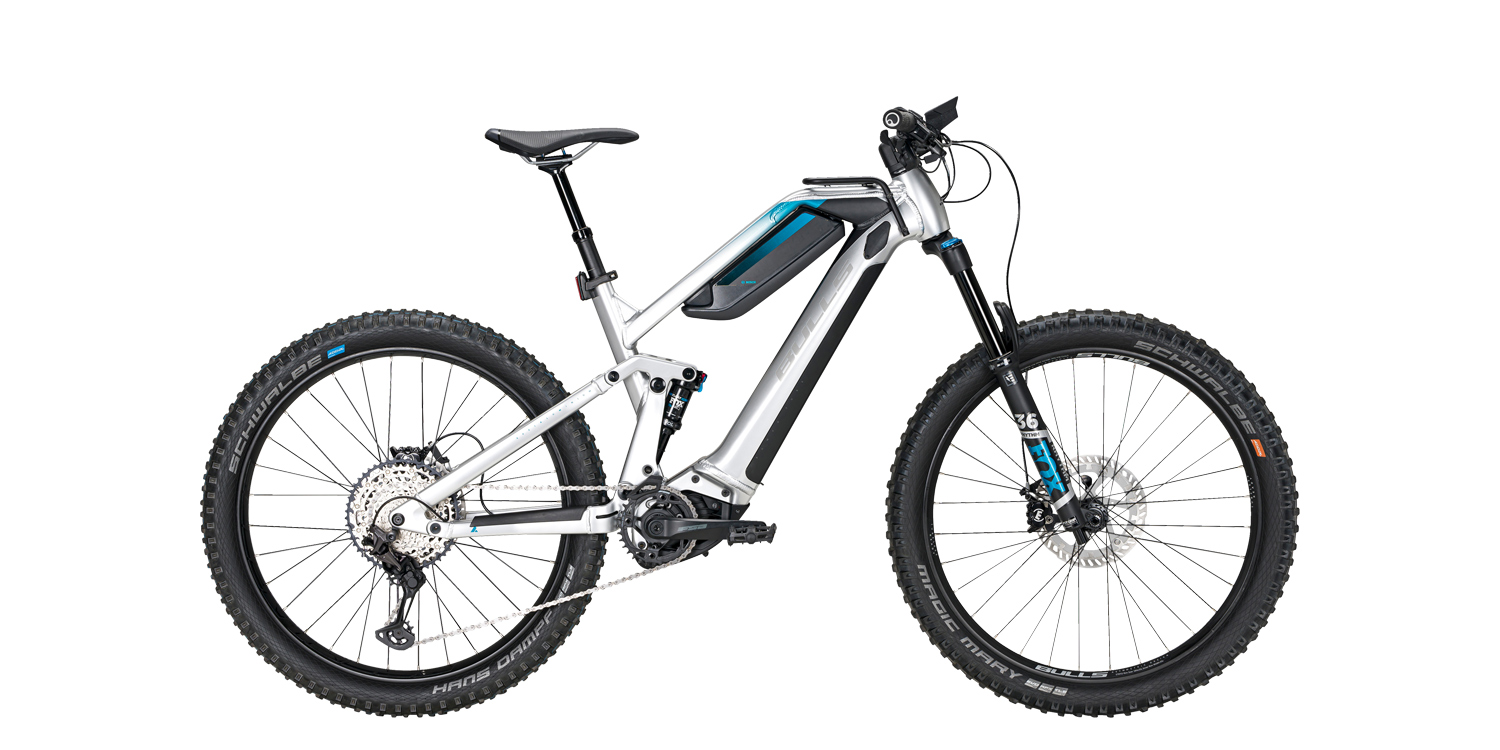
L Zerbe says
Great overview. I’ve ridden my Bulls Ecore Evo En di2 for about 500 miles now. I’ve ridden it quite hard off drop offs, jumps, rock gardens and flowing single track. For the more enduro geometry it climbs surprisingly well. I wasn’t expecting to ride it with one battery most of the time, but I can usually get a 20 mile, two hour session in trail mode with just the one and the weight saving is appreciated. With one battery it feels quite light and playful. I don’t notice the off center weight of the single battery – still jumps just fine. The longer 180mm travel takes the sting off those bigger hits and jumps that have flatter landings – which on my 150mm travel bike would sting a bit. Overall – highly recommend – and think it matches up well in terms of value compared to similarly priced emtbs.
Court says
Great feedback! I’m so glad that you commented on the balance of the bike with just one battery in. I agree that the long travel suspension is nice, and am a fan of lighter setups myself. Thanks for sharing your experience with this bike!